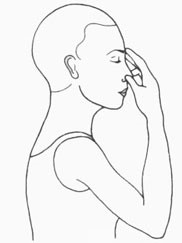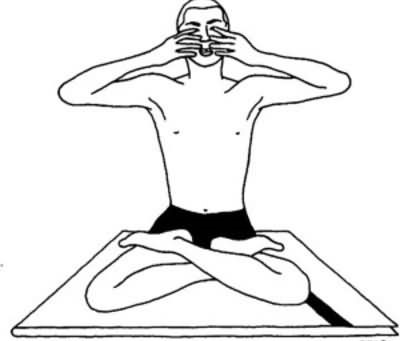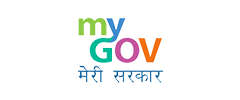Common Yoga Asanas
Any yoga practice starts with sukshma vyayama or micro-exercise to warm the body and mobilize the joints. Dhirendra Brahmachari, 1973 mentioned the protocol along with the following pictures
Greva shakti vikasaka (Picture 1.1) to mobilize and strengthen the neck



Picture 1.1: - Greva shakti vikasaka variates
Aìguli çakti vikäsaka (Picture 1.2) to mobilize and strengthen the fingers

Picture 1.2: - Aìguli çakti vikäsaka pose
Maëibandha çakti vikäsaka (Picture 1.3) and Käraprastha çakti vikäsaka (Picture 1.4) to mobilise and strengthen the wrists


Picture 1.3: - Maëibandha çakti vikäsaka pose


Picture 1.4: - Käraprastha çakti vikäsaka pose
Kati çakti vikäsaka (Picture 1.5) to mobilize and strengthen the back and spine muscles


Picture 1.5: - Kati çakti vikäsaka poses
Purna Bhuja sakti vikasaka (Picture 1.6) to mobilise arm joints


Picture 1.6: - Purna Bhuja sakti vikasaka pose
Jangha Sakti vikasaka (Picture 1.7) to toughen thighs:

Picture 1.7: - Jangha sakti vikasaka pose
Jänu çakti Vikäsaka (Picture 1.8) to mobilise and strengthen feet

Picture 1.8: - Jänu çakti Vikäsaka pose
Pindali Sakti vikasaka (Picture 1.9), Pada Mula Sakti vikasaka (Picture 1.10) and Gulpha pada prastha pada tala Sakti vikasaka (Picture 1.11) to mobilise and strengthen the calf muscles and thighs.

Picture 1.9: - Pindali sakti vikasaka pose

Picture 1.10: - Pada mula sakti vikasaka pose

Picture 1.11: - Gulpha pada prstha pada tala sakti vikasaka pose
Sun is the primary energy source, and in Indian philosophy, sun-worshipping has been practiced since ancient times. Suryanamaskara, or sun-salutation, is one of the main physical components of yoga postures. It comprises the sequential practice of pranamasana, hastha utthaanasana, paadhasthasana, ashwasanchalanasana, ashtanga namaskara, bhujangasana, and parvatasana (Figure 2.1). It should be practiced before dawn because it signifies sun salutation and worship. Suryanamaskara practice causes numerous body muscles to stretch, including smooth muscles surrounding our internal organs, activating and toning them.

Figure 2.1: - Surya namaskara postures
Shavasana (Figure 2.2) decreases muscle tensions and fatigue. It improves blood circulation and uniformity, thus helping control hypertension. Shavasana automatically makes breathing slow and deep (Sharma, Mahajan, and Sharma, 2007).

Figure 2.3: - Shavasana or corpse pose.
Ardhakati chakräsana (Figure 2.4) relieves gas and constipation and improves digestion.

Figure 2.4: - Ardhakati chakräsana pose
Trikonasana (Figure 2.5) stimulates peristalsis movement and is believed to relieve depression.

Figure 2.5: - Trikonasana pose
Parsavakonasana (Figure 2.6) tones arms, thigh, and back muscles.

Figure 2.6: - Parsavakonasana pose
Vajrasana (Figure 2.7) is the only asana that can be practiced immediately after meals. It is instrumental in digestion and managing acidity and gas.

Figure 2.9: - Vajrasana pose
Paçcimottänäsana (Figure 2.10) tones the uro-genital system and is beneficial in managing liver, spleen, and pancreas-related disorders

Figure 2.10: - Paccimottanasana pose
Vakrasana (Figure 2.11) tones the digestive system.

Figure 2.11: - Vakrasana pose
Chakki chalanasana (Figure 2.12) tones the digestive system, strengthens abdominal muscles, and prevents hernia. Its' practice generates body heat, thus helping in thermoregulation in cold environments.

Figure 2.12: - Chakki chalanasana pose
Viparita Karani (Figure 2.13) boosts blood circulation towards the brain, thereby improving cognition.

Figure 2.13: - Viparita karani pose
Mandukasana (Figure 2.14) is believed to help in diabetes management by stimulating the pancreas; it also relieves constipation.

Figure 2.14: - Mandukasana pose
Vrikshasana (Figure 2.15) improves balance and pelvic stability, strengthens the ligaments and tendons present in the entire leg, and improves posture.

Figure 2.15: - Vrikshasana posture
Decoupling of the word pranayama depicts two words: prana and ayama. Prana means life force, and ayama means expansion or extension. According to yog sutras, pranayama can be divided into three segments: ' puraka' involves inhalation, 'kumbhaka' means retention, and 'rechak' i.e. exhalation that can be slow or fast. Researchers have reported positive therapeutic effects of pranayama on hypertensive, asthma, autonomic nervous system (ANS) imbalance, and depressed patients (Jerath et al., 2006). It has been reported that deep breathing manoeuvres like pranayama stimulate pulmonary stretch receptors and lead to sympathetic nervous system (SNS) inhibition, causing vasodilatation due to decreased peripheral resistance (Kuppusamy et al., 2016).
Kapalabhati (Figure 2.16), also called "breath of fire," is yogic breathing, primarily a cleansing breathing maneuver and sometimes wrongly regarded as pranayama. It employs rapid but very shallow breath in which the abdominal region acts like a bellows. It boosts the digestive system, excretes excess carbon dioxide, and balances the autonomic nervous system. Kapalbhati is associated with an increase in the sympathetic tone of the practitioner.

Figure 2.16: - Kapalabhati Kriya or breath of fire
Nadishodhana pranayama or anulom-viloma pranayama (Figure 2.17) relieves stress, and the practice of nadishodhhana pranayama reported no changes in the para-sympathobalance (Raghuraj et al., 1998).

Figure 2.17: - Nadishodhana pranayama or alternate nostril breathing
Bhramari pranayama (Figure 2.18) is another essential breathing practice. The name is derived from the Sanskrit word 'Bhramar', which means wasp. It is because, during this pranayama practice, an individual has to mimic a wasp's humming sound. It improves cognition and helps in improving sleep. Bhramari pranayama is simple to do and has very profound immediate physiologic effects. Within 5 minutes of practice, the parasympathetic branch of the nervous system activates (Pramanik et al., 2009). Besides, the paroxysmal gamma wave pattern is recorded during and after its practice. These gamma waves are associated with high mental activities (Kuppusamy et al., 2016).

Figure 2.18: - Bharamari pranayama
Clearly, asana and pranayama are helpful for a holistic health approach. Therefore, it was rational to implement a yogic intervention to mitigate the problems.










